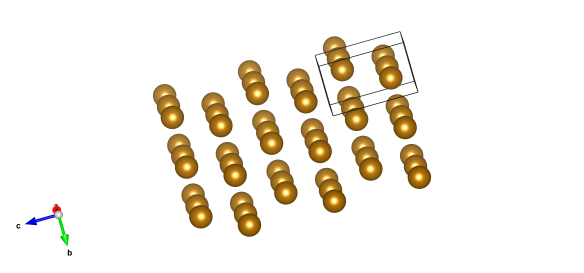What is our planet made out of? (8) Hcp Iron
What does it look like?

Image generated by the VESTA (Visualisation for Electronic and STructural analysis) software http://jp-minerals.org/vesta/en/
What is it?
We've pretty much reached the end of our journey into the centre of the Earth. Moving deeper from the post-perovskite of the ultra-low velocity zone we reached the core of our Earth. This has two very distinct parts. From about 2900 km to 5150 km under our feet this first section is the outer core. This, we know from observing how earthquake waves travel through the Earth, is liquid and probably a mixture of molten iron and nickel. At 5150 km we meet the last slice of the Earth layer cake, the inner core. This is solid, and thought to be predominately a high-pressure form of iron, hexagonally close packed (hcp) Iron, sometimes known as hexaferrum. We've actually seen this structure before: when you freeze the noble gases, like Krypton, you also see this crystal structure forming. However, in reality the core is probably going to be more complex that just made of this high-pressure iron. For one thing there is a substantial amount of nickel there too, and it's still unknown how this would affect the structure of hcp iron. Also, it is thought the core is actually a little lighter than you would expect, if it were made completely of iron and nickel – it has long been suspected that there is a light element living there too. But what that is, has still to be discovered.
Where did the structure come from?
The structure of hexagonally close-packed iron was first proposed by Takahashi and Bassett in 1964. The structure we've drawn here was determined from data collected from iron at 61 GPa of pressure and 1550 K of temperature, which is #9006657 in the Crystallography Open Database.






